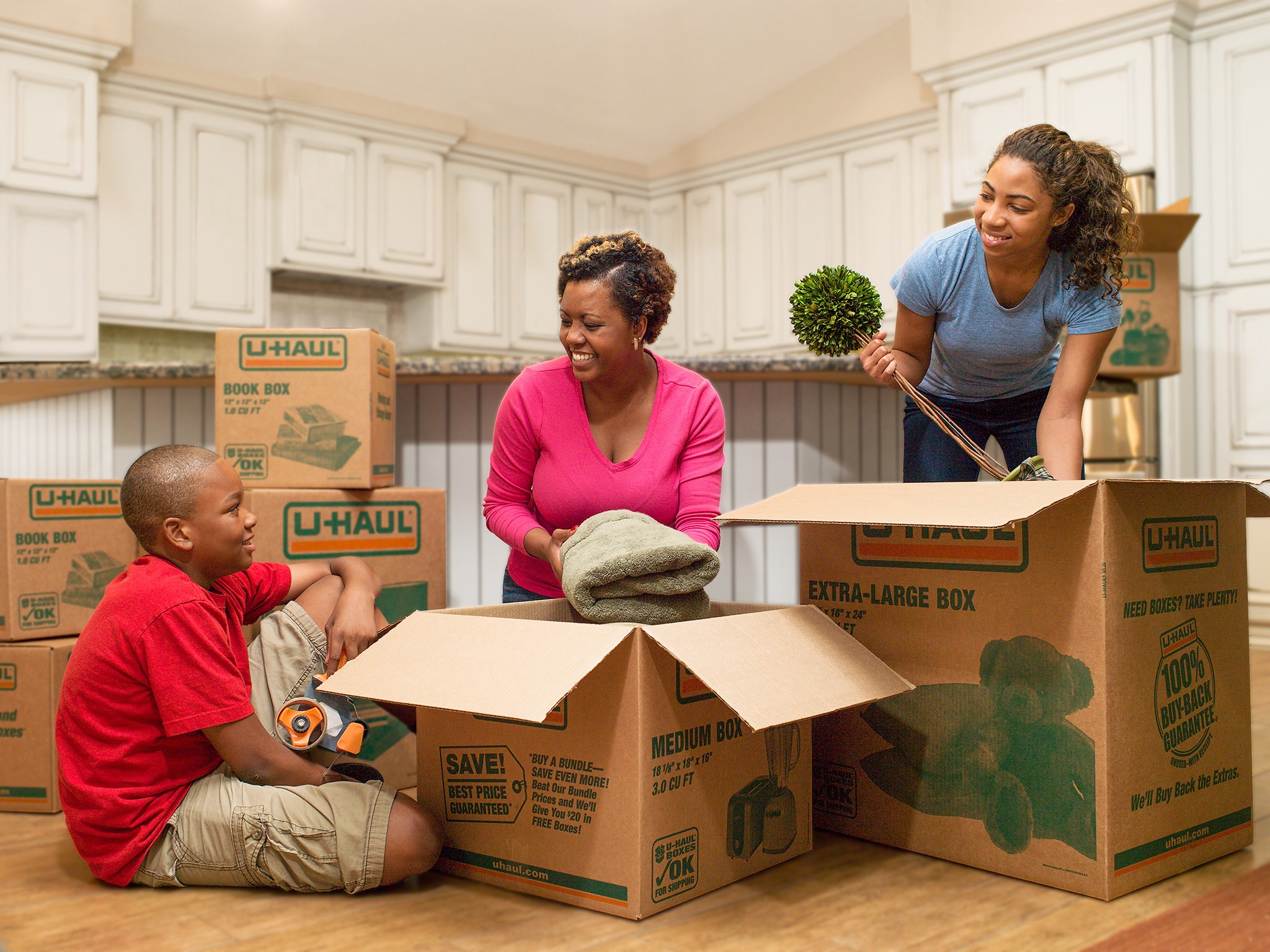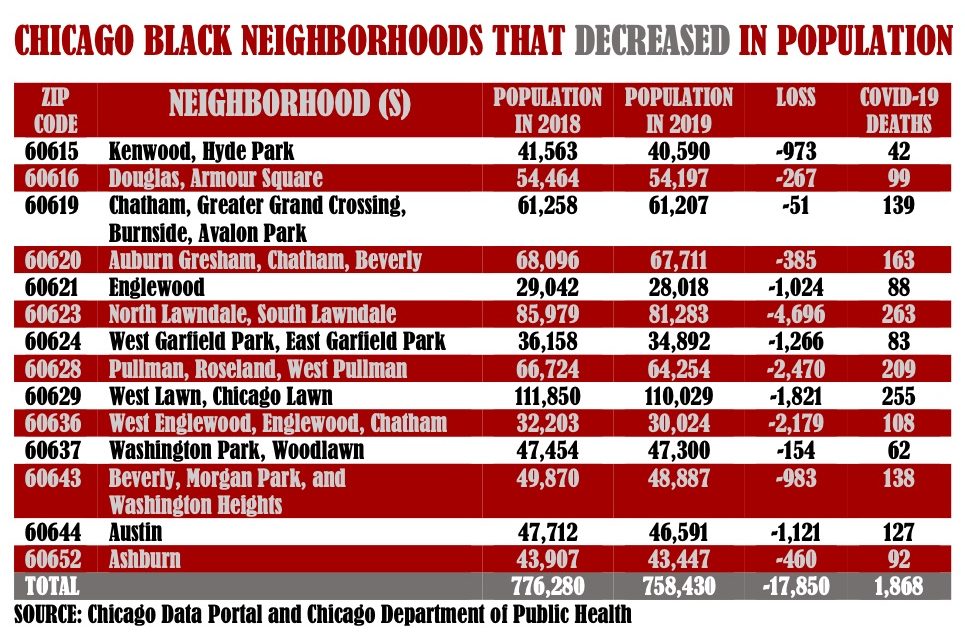Crusader analysis shows thousands of residents left 14 Black neighborhoods between 2018 and 2019
One year before the coronavirus pandemic, Chicago that year lost a total of 17,850 residents in at least 14 zip codes that include predominately Black neighborhoods, according to a Crusader analysis of figures from the city’s data portal.
The loss is 65 percent of the population loss Chicago experienced in a total of 29 zip codes that includes neighborhoods throughout the city.
The Crusader has learned that the heaviest losses in residents came from zip codes that include heavily populated Black neighborhoods that have experienced gun violence, poverty and disinvestment over the years.
These problems have led many Blacks to move to the suburbs or to other states, seeking a safer quality of life with more economic opportunities.
The Crusader reviewed the city’s 59 zip codes and particularly 18 zip codes that include predominately Black neighborhoods or communities with large Black populations. Of those 18 zip codes, just four include Black neighborhoods that gained new residents, fueling concerns of gentrification in neighborhoods such as Bronze -ville and South Shore.
The remaining 14 zip codes saw the highest population loss in the city, where 17,850 residents left Black neighborhoods between 2018 and 2019.
Seven zip codes, or half of the 14 zip codes, indicate population declines that saw over 1,000 leave Black neighborhoods, city data show.
In two other zip codes with large Black populations, nearly 1,000 people left between 2018 and 2019. Those zip codes include the neighborhoods of Kenwood, Hyde Park (60615) and Morgan Park and Washington Heights (60643).
In all 14 struggling zip codes, a total of 1,868 people died of COVID-19; many more have been killed by gun violence.
The news comes as Chicago prepares to redraw the map of the city’s 50 wards. Illinois law requires Chicago to redraw the map once the official U.S. Census figures are released. With population losses in Chicago’s Black communities a known fact, there is concern that Chicago’s Black wards may suffer when the map is redrawn to reflect the new 2020 Census figures.
Many of the Black wards that may be impacted by the new map are on the South and West sides, including Alderman Anthony Beale’s 9th Ward, which includes zip code 60628, which covers Roseland, West Pullman and Pullman. Those communities, along with North and South Lawndale and West Englewood, experienced the highest population loss in the city in 2019.
In North Lawndale and South Lawndale, about 81,283 residents live in zip code 60623. Between 2018 and 2019, about 4,696 residents left those neighborhoods, making it the highest population loss in the entire city that year. In addition to having the highest population loss, zip code 60623 also has the highest number of COVID-19 deaths, at 263.
In zip code 60628, 66,724 residents lived in the Roseland, West Pullman and Pullman neighborhoods in 2018. By 2019, 64,254 lived in 60628 for a population loss of 2,470, the second highest in the city that year. In the same zip code, 209 residents died of COVID-19, according to the latest data about 60628, from the Chicago Department of Public Health.
The zip code with the third highest population loss is 60636, which includes West Englewood, Englewood, Chatham and other Black neighborhoods. A total of 2,179 residents left those communities that had a total population of 32,203 in 2018. In that same zip code, 108 people have died from COVID-19.
Another zip code that experienced a high population loss is 60629 (West Lawn, Chicago Lawn), which has the highest number of residents in Chicago with 110,029 residents. That is after about 1,821 left those communities in 2019. In addition, about 255 residents in 60629 have died from COVID-19.
Other zip codes with high population losses include 60624 (West Garfield Park, East Garfield Park), where 1,266 residents have left and 83 have died from COVID-19. Austin (60644) and Englewood (60621) also experienced population losses after residents left and many died from COVID-19.
The other 15 zip codes that experienced a population loss totaling 9,567 include neighborhoods in the Loop, the Near North Side and the predominantly Hispanic Belmont Cragin neighborhood (60639), where 2,313 residents left in 2019, the third highest in the city that year.
Population declines in many neighborhoods show that it is a citywide trend, but the biggest concern remains among Black communities, which have been shedding residents for years because of persistent gun violence that has killed thousands of residents.
The Crusader analysis also revealed that some Black neighborhoods gained residents in 2019. They include South Shore (60649), which added 609 residents to its 46,024 population in 2019.
In zip code 60617, which includes South Chicago, East Side, Avalon Park, Calumet Heights and Deering, about 1,019 new residents were added to the 82,534 population, the sixth largest in the city.
The highest population increase on the South Side was in zip code 60653 in Bronzeville’s Oakland and Grand Boulevard neighborhoods. About 1,182 people were added to the area’s population of 31,972.
Bronzeville and South Shore are among the city’s hot neighborhoods where big development projects are fueling concerns of gentrification.
In Bronzeville, numerous affordable housing developments and rising property values have occurred in the last five years as more white and Asian residents move further south.
Community amenities, such as Mariano’s Supermarket, have made Bronzeville a more attractive place to live.
In South Shore, the impending construction of the Obama Presidential Library has fueled a boom in property values in the affluent, historic Jackson Park Highlands district, where some of the city’s most prominent and successful residents live.
Three years ago, Chicago Magazine named South Shore as one of the city’s hottest neighborhoods with its golf courses and proximity to the city’s lush lakefront.
Thanks to the generosity of funding provided by The Field Foundation of Illinois, Inc. in producing this article.








